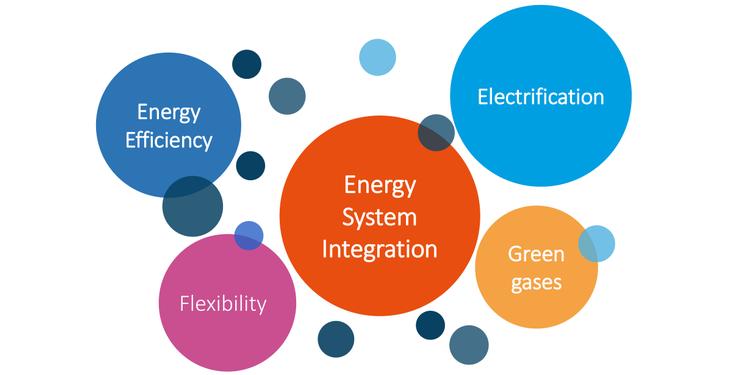The European Green Deal promises to deliver on a net-zero emissions energy system by 2050, through higher ambition on energy efficiency, system integration and renewable energy. A new study published by Artelys finds that cogeneration (CHP) is a primary enabler to achieve carbon neutrality in Europe by 2050. Realizing the cost-effective potential for CHP in all sectors will maximize energy efficiency and integration of the European energy system at the lowest cost, while bringing key benefits to end consumers.
Hans Korteweg, Managing Director of COGEN Europe, offered a quick overview of the multiple benefits of CHP, while speaking at the “Regional Approach Brussels – Energy Transition” conference organized by Energynomics. Full conference is available HERE.
The study “Towards an efficient, integrated and cost-effective net-zero energy system in 2050: the role of cogeneration” was commissioned by COGEN Europe and is supported by 26 industry partners spanning across the entire energy value chain. Building on the European Commission’s ambitious 1.5 TECH scenario in the Long Term Strategy, the study optimizes the uptake of CHP in terms of both efficiency and flexibility across integrated heat and power systems.
The study finds that there is cost-effective potential for CHP as a key solution in a highly electrified, highly renewable and low demand net-zero emissions energy system. When considering higher shares of bioenergy sources, CHP uptake is even more relevant fostering the efficient use of these fuels. Optimizing CHP as part of integrated energy systems leads to energy system cost reduction of €4.1-€8.2 billion and allows to reduce remaining CO2 emissions by 4-5 MtCO2 annually in 2050, as part of a net-zero emissions Europe. CHP will displace less efficient power-only and heat-only generation, contributing 13-16% of total power and 19-27% of total heat production in 2050. Optimized CHP will operate flexibly and efficiently when and where needed, especially at times of peak demand by heat pumps and electrical vehicles and insufficient wind and sun generation.
”This study highlights the benefits of cogeneration in Europe under different 2050 carbon neutral pathways, at both user and system levels, across different geographies and in all sectors”, said Christopher Andrey, Projects Director at Artelys. “The study shows that a refined modelling of electricity-heat interlinkages is essential to assess the cost-effective potential for CHPs, in the context of the EU Green Deal in highly decarbonized contexts.”
As the Artelys study shows, “cogeneration enjoys widespread support in the EU and beyond, as a solution of choice across all sectors”, said Hans Korteweg, Managing Director of COGEN Europe. “Furthermore, it indicates that there is a cost-effective potential for 40 GW of additional cogeneration capacity to be built between now and 2050. This will bring efficient, flexible and affordable power and heat to hundreds of cities and industries, as well as millions of citizens. An ambitious and predictable regulatory framework for cogeneration is imperative to fully reap the benefits of efficiency and energy systems integration for citizens, businesses and the energy system between now and 2050.”
Marco Pezzaglia, COGEN Europe’s Chairman added that cogeneration can be the backbone of a carbon neutral Europe in 2050. “In a resource-finite world, we can no longer afford wasting energy. Cogeneration needs to be prioritized over the inefficient separate production of heat and power starting today. This will help maximize energy efficiency in key sectors of the economy and integrate the European energy system at the least cost.”
